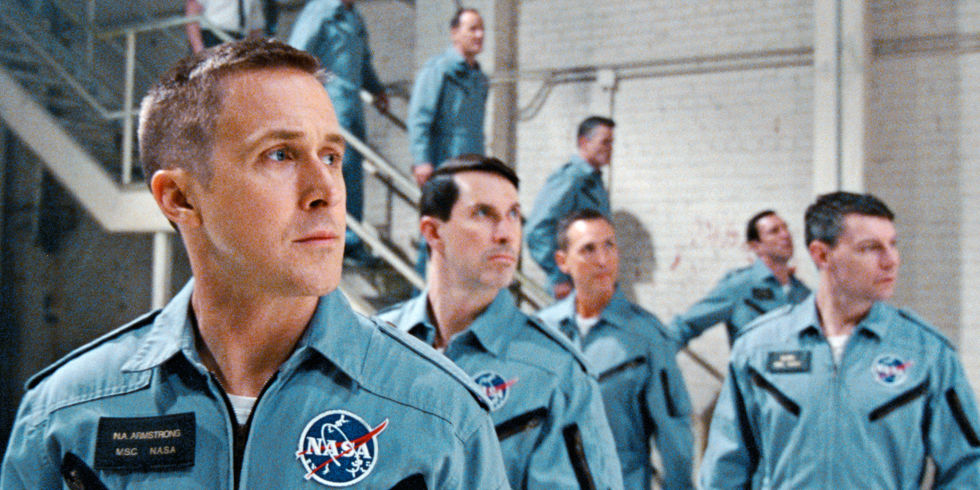Halfway through First Man, Janet Shearon (Claire Foy), wife of astronaut Neil Armstrong (Ryan Gosling), confronts a NASA official (Kyle Chandler) to demand information about her husband after a near-fatal test mission. Her response to the official’s attempt at reassurance is one of the film’s more memorable lines.
“You’re a bunch of boys making models out of balsa wood,” Shearon says. “You don’t have anything under control!”
Director Damien Chazelle invites his viewers to agree. First Man, adapted from James R. Hansen’s book of the same name, is pervaded by a feeling of insecurity. Recounting the lead up to the 1969 Apollo 11 mission, the film subverts other cinematic treatments of outer space. Chazelle swaps the mystery and majesty of space films like 2001: A Space Odyssey, Solaris, and Apollo 13 for an intense, shaky immediacy, placing the viewer inside the claustrophobic cabins of the spacecraft as they rattle their way skyward.
The story’s human drama is equally intimate, and Gosling and Foy tether the film with their performances as Armstrong and Shearon. We first see Gosling as the titular hero on a high-altitude flight that nearly ends in disaster. His subsequent indifference to the ever-present danger of the space program, and his disregard for the distress of his loved ones become Armstrong’s most defining character traits—throughout the film, he remains enigmatic and distant. As political and familial turmoil swirl around him, Armstrong’s gaze remains fixed on the moon and the memory of the loss of his daughter to a brain tumour. Foy plays against Armstrong’s detachment with strength and charisma, serving as her family’s anchor in the absence of her husband.
Central to Chazelle’s vision is the story behind the mission itself, told with dramatic understatement. The deaths of a crew of astronauts in a cabin fire are made all the more shocking by how frankly the film presents them. The death of Armstrong’s daughter in the film, initially treated without much sentimentality, quietly follows him to the surface of the moon.
The film’s intimate camerawork effectively conveys Armstrong’s claustrophobia both in the cockpit and at home. His inability to find breathing space and to reconcile with his grief on the ground drive him to look for calm beyond the tethers of Earth. Justin Hurwitz’s melancholy score punctuates this emotional trajectory, evoking Armstrong’s loneliness amidst the lunar landscape with the sound of a theremin.
Cinematographers often explore personal loss against the canvas of space, as in Alfonso Cuarón’s Gravity, or Christopher Nolan’s Interstellar. But while Chazelle’s commitment to realism creates an experience more grounded and human than either of these films, the extensive dramatic understatement of the film is ultimately more stifling than illuminating.
The domestic drama of the story, told in a direct, intimate fashion, simply isn’t enough fuel for the film to escape the gravity of its subject matter. The moon landing seems to exist on a level of pure mythology, but the personal drama doesn’t provide enough of a counterweight to the raw excitement of the space sequences to make the film’s exploration of the costs of the mission truly resonate.
Where First Man succeeds most is as a visceral, first-person account of the sheer unlikeliness of the Apollo 11 mission. In its portrayal of the space program’s unceasing, absurd danger, the film evokes a renewed awe for the 1969 mission. First Man’s unrelenting, unsteady energy makes its few moments of stillness all the more profound, and the moon landing sequence alone is worth the cost of a ticket. Yet, leaving the theatre, the viewers might find themselves struggling to see the significance of the human drama—and humming “The Blue Danube” all the way home.








